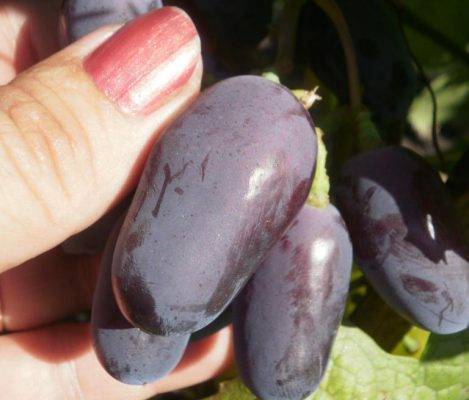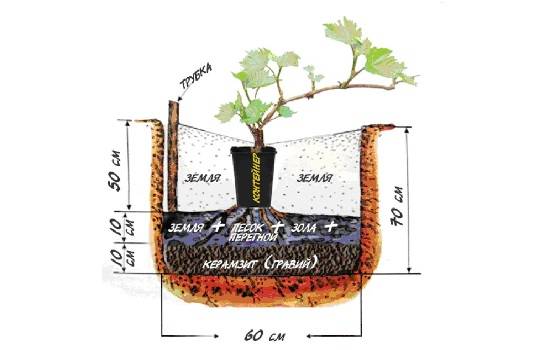Content
The vine is a child of the Earth and the Sun. Its berries are filled with life-giving power that is available to humans. According to legend, yellow grapes absorb the energy of daylight, red grapes symbolize the morning dawn, dark blue and black berries hide the secret of the southern night. You can reveal this very secret by trying the fruits of the magnificent Baikonur variety. It is one of the most promising new products on the market and has already won many fans and admirers. Its popularity and demand is explained by its excellent product, taste and agrotechnical qualities. All the most relevant and useful information about this unique variety can be found further in this article.
Advantages of the variety
Man cultivated grapes 7 thousand years ago. During this time, a huge number of different varieties of this plant have appeared, but the best of them can be safely called the Baikonur grape. Its creator is the amateur breeder Pavlovsky E.G. The variety was obtained by crossing two well-known progenitors: the “Krasotka” and “Talisman” grapes. The resulting variety absorbed the best qualities of its ancestors. So, among its advantages it should be noted:
- early grape ripening;
- excellent, harmonious taste of berries;
- high resistance to weather “cataclysms” and some diseases;
- excellent commercial qualities, large size of berries and bunches, resistance to cracking and falling;
- suitability for transportation and long-term storage;
- high productivity;
- no peas (does not form small berries);
- good resistance to freezing.
The Baikonur variety was developed relatively recently: only in 2012 did it become available to the average gardener. At the same time, the cost of the new product was sometimes several times higher than the price of other varieties of this crop, so they bought seedlings with caution and some distrust. Today, many farmers know about the Baikonur variety. From their lips you can only hear good comments and praise about this grape. For those who are not yet familiar with the culture, we will try to provide a detailed description of the Baikonur variety, photos of the grapes and reviews about it.
Features of berries
An experienced specialist will be able to distinguish the berries of the “Baikonur” variety both “by eye” and by taste. The dark purple and sometimes even black berries are very large and cylindrical in shape. The weight of each of them varies from 14 to 18 g. The length of the cylindrical fruits in some cases reaches 40 mm. These giant berries are collected in lush and amazingly beautiful bunches, weighing up to 700 g. Such magnificent grapes always surprise with their appearance and make you want to try them.
The berries of the Baikonur grapes are characterized by fairly dense pulp and thin, delicate skin.But despite its delicacy, the skin of grapes is resistant to cracking and even during the rainy season retains its integrity. The berry pulp has a subtle fruity aroma. There are no notes of nutmeg in the taste of the fruit.
Among all the characteristics, the “calling card” of the Baikonur variety is the sweetness of the fruit: large grapes, even during the heavy rainy season, accumulate about 20% sugar. The acidity of the berries during ripening can be about 7%, but during storage the grapes almost completely get rid of acid. The high sugar content makes the variety indispensable in winemaking, because there is no need to artificially increase the sugar level when using the Baikonur variety.
The Baikonur grape variety retains its excellent appearance and taste not only at the ripening stage, but also after harvesting. Ripe berries, regardless of weather conditions, do not fall off, but patiently wait for cutting. The collected bunches of grapes can be stored in a cool room or used to make wine and jam. If necessary, the crop can be safely transported over long distances. Analyzing the description of the Baikonur grapes, we can safely conclude that this variety is best suited in its properties not only for consumption within one family, but also for cultivation for subsequent sale.
Description of the vineyard
It is quite difficult to describe the Baikonur grape variety in detail, since today only research is being conducted to determine this or that parameter.In general, when describing the Baikonur grapes, one has to rely on the observations and reviews of those winegrowers who have been growing this wonderful plant in their garden for several years and the data provided by the author of this Baikonur variety himself.
The Baikonur grape variety is a vigorous shrub that can be grown in its own root form or by rootstock. In both cases, the plant actively grows powerful green shoots and bears fruit well. Grafting of the Baikonur variety can be done on any grapevine variety, with the exception of the Rumba variety.
The Baikonur grape vine ripens in one summer season. Young shoots already at the age of 2-3 years rise to a height of 3-4 m. The huge bush always pleases the eye with its rich green, juicy greenery. The root system nourishes well not only the lower, but also the uppermost leaves of the plant.
Flowering grapes and fruiting period
The flowering of the Baikonur grapevine is always active and complete: the flowers of the plant are bisexual and pollinated without problems. Already after 105-115 days from the beginning of the growing season, you can try the first grapes of this variety. Under favorable weather conditions, the first harvest period occurs at the end of July. In general, the ripening period of the bunches continues until late autumn.
The weight of the first ripening bunches is small and can be only 500 g.Later bunches of grapes can weigh up to 700 and sometimes 1000 g. The yield of Baikonur grapes depends directly on the growing conditions and, in particular, on the intensity of watering the plants. When observing particularly large, full bunches, you need to take care of installing additional supports that will remove excessive load from the grapevine.
Features of cultivation
Vigorous and lush grapes of the Baikonur variety must be grown on a sunny plot of land, where there are no drafts and access to cold northern winds. It is preferable to plant shrubs on the southern or southwestern side of the site. If necessary, artificial wind protection can be provided. This could be a building wall, a fence or a tall tree.
To grow the Baikonur variety, you need to prepare the soil. This grape prefers light and nutritious soils. In addition to the necessary substances and moisture, the roots of the plant must have access to oxygen. You can obtain the most suitable substrate for the culture as follows:
- In heavy clay soils you need to add sand, manure, and peat. For drainage, you need to place a certain amount of expanded clay, gravel or pieces of broken brick into the soil.
- The fertility of sandy soils should be increased with the help of manure and peat.
- Saline soils must be washed before planting grapes. To do this, in the autumn, the plot of land is irrigated abundantly and groundwater is drained from the planting site using a set of drainage elements.
- Unfortunately, it is not possible to grow Baikonur grapes on marshy soils. If there is an urgent need, swampy areas of soil can be drained by providing a drainage system.
Having chosen a suitable place on the site, you can begin planting grapes. To do this, you can use cuttings or already grown seedlings. The soil at the planting site must be deeply loosened. The depth of planting and loosening largely depends on the characteristics of the growing region:
- the deeper the roots of the seedling are located, the less likely the plant is to freeze in the winter;
- deep roots have better access to underground moisture.
Taking these features into account, the following planting depths can be recommended:
- In the southern regions, it is enough to make a planting hole 50-55 cm deep.
- In regions with a high probability of severe winter frosts, increase the depth of the planting hole to 60-70 cm.
- In the northern part of the country, it is recommended to plant seedlings of the “Baikonur” variety to a depth of 80 cm.
- In arid regions, the roots of the seedling should be placed as deep as possible.
Such recommendations will allow you to preserve the vineyard in winter, regardless of the “surprises” of the weather. In general, the Baikonur grape variety, according to its characteristics, is winter-hardy and successfully tolerates winter temperatures down to -230WITH.
You need to dig a planting hole slightly below the recommended depth, since 15-20 cm of the bottom of the hole needs to be filled with drainage material and nutrient substrate. A small hill is formed from humus or peat, which is lightly sprinkled with turf soil. You need to place a seedling on the resulting hill inside the hole and straighten its roots. The remaining volume of the pit must be filled with turf soil with the addition of peat, sand and superphosphate (ash). After the planting site is half filled with soil, you need to water the plant generously.When the water is absorbed deep into the ground, you can pour the remaining soil into the hole, keeping only 2-3 eyes above ground level.
As the grapes grow, soil will need to be added to the planting hole.
Varietal grapes from cuttings
The Baikonur grape variety can be propagated by cuttings without any problems, so if your neighbor has a varietal vine, you can ask for a piece to propagate in your garden. A good grape cutting is a piece of mature vine with 3-4 eyes and internodes, 7-10 cm long. The cutting can be germinated in the gentle conditions of a greenhouse or by planting directly into the ground. It is recommended to plant cuttings of Baikonur grapes in the ground in early spring or autumn, but the second option significantly reduces the likelihood of plant survival.
The grape cuttings need to be prepared:
- Trim the bottom edge diagonally at a distance of 5-10 mm from the eye.
- Cut the top edge of the cutting horizontally above the eye by 3 cm.
- Make small vertical cuts (furrows) in the lower part of the cutting, which will allow the grapes to take root faster.
- The lower edge of the cutting with grooves should be dipped in Kornevin or soaked for several hours in a solution of a root growth stimulator.
- Bury the grape cuttings with earth, tilting them 450.
- Young seedlings of the Baikonur grapes need to be covered with leaves, straw, and spruce paws for the winter.
This simple method of propagating Baikonur grapes is the most affordable for winegrowers, since there is no need to buy expensive seedlings.Its main disadvantage is the low survival rate of cuttings.
Conclusion
The Baikonur grape variety can easily be called the best among other grape varieties. Its berries are exceptionally tasty and aromatic. Their appearance will not leave anyone indifferent, because large, juicy, fleshy fruits just beg to be eaten. The good yield of the Baikonur variety and the high sugar content in the fruits allow you not only to enjoy fresh berries, but also to prepare jam and natural grape wine for the winter. Thus, the Baikonur vineyard can become a lush green decoration of any garden, an excellent treat for children and a godsend for winemakers.




















